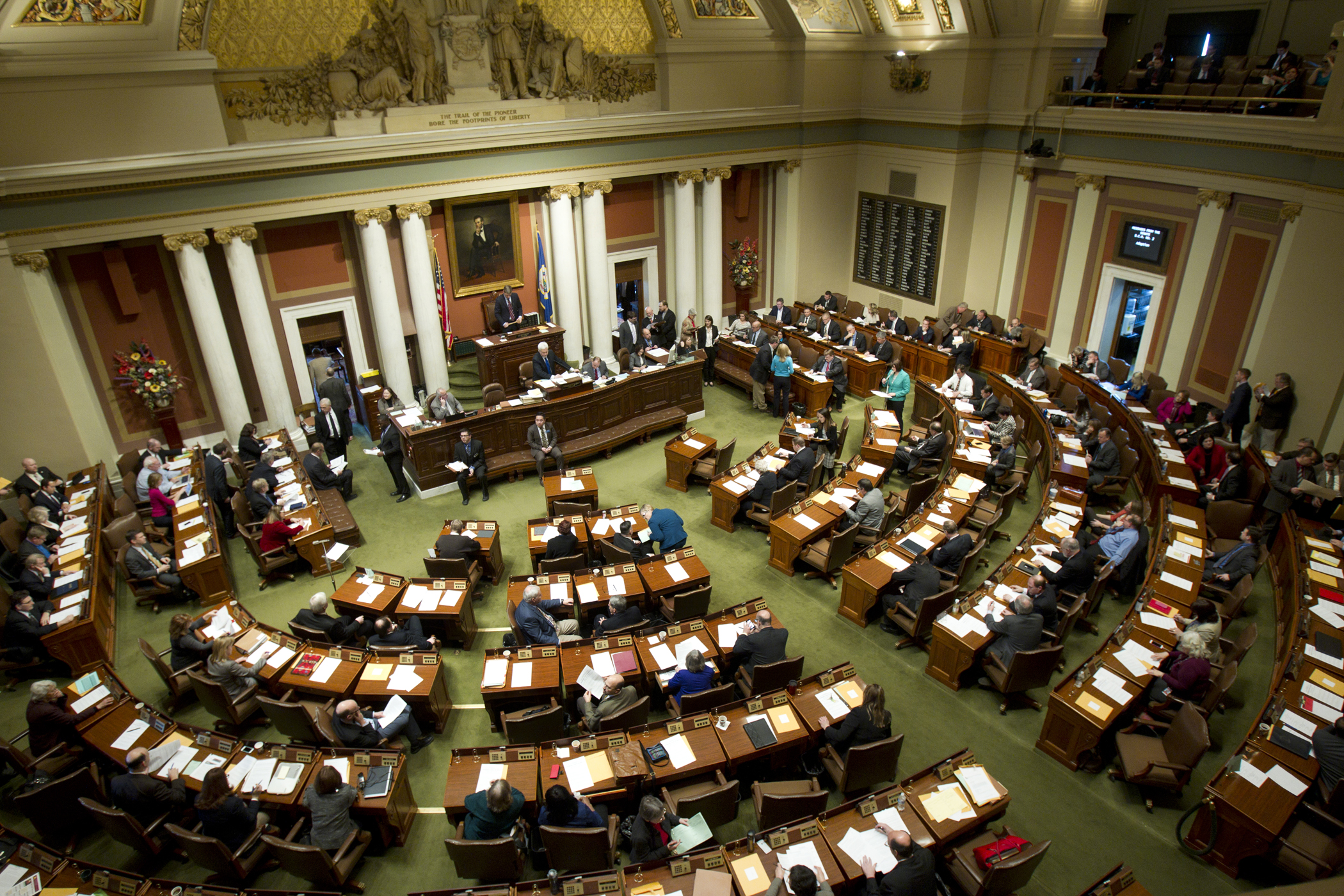House, Senate versions of Real ID bill likely headed to conference

The House on Tuesday passed language that would make Minnesota IDs compliant with tougher federal security standards laid out in the Real ID Act.
Lawmakers voted 87-42 to pass HF3959/SF3589*, as amended. The legislation would lay out new requirements for state IDs, including new security features on the cards, added proof of residency requirements and extended data retention timelines.
“The time is now,” said Rep. Dennis Smith (R-Maple Grove), the House sponsor. “This body has a bill in front of them to vote for Real ID, or vote against Real ID. … Minnesotans have asked us to fix this problem.”
The bill now goes back to the Senate, where Sen. Scott Dibble (DFL-Mpls) is the sponsor.
If signed into law, the measure would put Minnesota in compliance with federal Real ID standards passed by Congress in 2005 intended to make state-issued IDs safer in the face of terrorism concerns. Minnesota is one of the few remaining states flouting the law, and if not in compliance by January 2020 it would mean residents could not board commercial domestic flights using only their standard state-issued ID.
The bill passed by the House on Tuesday differs widely from Real ID legislation passed 48-16 last week in the Senate. It likely sets the stage for further wrangling over an issue that is already impacting Minnesotans who need to gain access to secure federal facilities and military bases but cannot using only the state’s non-compliant licenses.
MORE What is Real ID?
Gov. Mark Dayton earlier this session signed into law the repeal of a 2009 law that prevented state officials from planning to comply; the bill passed Tuesday would repeal a prohibition on taking steps to comply with the law. Federal officials cited that prohibition Monday in denying the state a further extension to meet Real ID requirements.
Both comply, but big differences
Both the House and Senate versions would offer Minnesotans the option of obtaining a standard, non-compliant ID. When the state’s Driver and Vehicle Services Division would begin issuing the new, more secure IDs, however, is one key difference between the House and Senate versions.
Under the House language, the state would be directed to begin issuing Real ID-compliant licenses by Oct. 1, 2016; the Senate’s would delay implementation until January 2018.
Officials from DVS have criticized the House’s proposed timeline as unworkable, requiring the agency to undertake substantial changes to a computer system that’s in the process of being phased out in order to rush toward compliance this year.
That process, DVS and Department of Public Safety officials have said, would make up the bulk of the estimated more-than $5 million cost of complying with Real ID legislation by Oct. 1.
“The state agency charged with implementing (the bill) has said it’s very, very difficult — if not impossible — to do” on the timeline laid out in the House version of the bill, said Rep. Frank Hornstein (DFL-Mpls).
WATCH House Floor debate of the bill on YouTube
Language in the House bill specifically barring undocumented immigrants from obtaining driver’s licenses is another big difference between the bills.
The Senate bill contains no language on the subject, and Rep. Rod Hamilton (R-Mountain Lake) unsuccessfully attempted to amend the bill to remove the immigration language. Last year, Hamilton and Rep. Karen Clark (DFL-Mpls) sponsored bills to allow undocumented immigrants to be licensed to drive in the state; neither bill advanced to the House Floor.
What’s in the bill
HF3959/SF3589* as amended by the House includes other measures that would:
- authorize expedited rulemaking for the Department of Public Safety on driver’s licenses and ID cards;
- appropriate $6.3 million from the driver services operating account to cover the costs of implementation;
- prohibit state departments from complying with any future Real ID Act law, process or data practices changes;
- require that applicants’ Social Security numbers are retained along with other application data;
- require proof of residency when applying for an ID;
- require applicants to sign a declaration under penalty of perjury that the information they provide is truthful; and
- require that applicant data be kept for 10 years, up from the current retention schedule of five years.
Related Articles
Search Session Daily
Advanced Search OptionsPriority Dailies
Ways and Means Committee OKs proposed $512 million supplemental budget on party-line vote
By Mike Cook Meeting more needs or fiscal irresponsibility is one way to sum up the differences among the two parties on a supplemental spending package a year after a $72 billion state budg...
Meeting more needs or fiscal irresponsibility is one way to sum up the differences among the two parties on a supplemental spending package a year after a $72 billion state budg...
Minnesota’s projected budget surplus balloons to $3.7 billion, but fiscal pressure still looms
By Rob Hubbard Just as Minnesota has experienced a warmer winter than usual, so has the state’s budget outlook warmed over the past few months.
On Thursday, Minnesota Management and Budget...
Just as Minnesota has experienced a warmer winter than usual, so has the state’s budget outlook warmed over the past few months.
On Thursday, Minnesota Management and Budget...